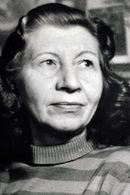Violette Leduc
Born on April 7, 1907, in Arras, Pas de Calais, France, Violette Leduc was a French writer. Her illegitimate birth, to a servant girl and a son of a rich Protestant family, was not legitimized by her father.
Leduc spent her childhood in Valenciennes, where she struggled with poor self-esteem, partly due to her mother's hostility and excessive protectiveness. However, she found solace in her tender friendships with her grandmother Fideline and maternal aunt Laure. Her grandmother passed away when Leduc was a young child.
Leduc's formal education began in 1913 but was interrupted by World War I. After the war, she attended the Collège de Douai, where she had lesbian affairs with her classmate "Isabelle P", which later inspired her novel Ravages and Thérèse et Isabelle.
In 1925, Leduc began an affair with her supervisor Denise Hertgès, four years her senior. The affair was discovered, and Hertgès was fired from her job. Leduc moved to Paris in 1926, along with her mother and step-father, and enrolled in the Lycée Racine. She failed her baccalaureate exam and began working as a press cuttings clerk and secretary at Plon publishers.
Leduc continued to live with Hertgès for nine years, during which she began writing news pieces about Plon's publications. Her mother encouraged her homosexual relations, believing it would protect her from illegitimate pregnancy.
In 1927, Leduc met Jacques Mercier, seven years her senior, at a cinema. Despite her involvement with Denise Hertgès, Mercier pursued Leduc, leading to a love triangle that inspired the plot of Ravages. Leduc's relationship with Hertgès ended in 1935, and she married Mercier in 1939. Their marriage was unsuccessful, and they separated. During their separation, Leduc discovered she was pregnant and almost died from an abortion.
In 1938, Leduc met Maurice Sachs, and in 1942, he took her to Normandy, where she wrote the manuscript of L'Asphyxie. She also involved herself in black market trading, which allowed her to make a living.
Leduc's friendship with Simone de Beauvoir began in 1944, and she gave Beauvoir a copy of the manuscript of L'Asphyxie in 1945. Beauvoir became a mentor and friend to Leduc, who went on to publish her first novel, L'Asphyxie, in 1946. The novel earned praise from Jean-Paul Sartre, Jean Cocteau, and Jean Genet.
Leduc's life and friendship with Maurice Sachs are detailed in her autobiography La Bâtarde.


















